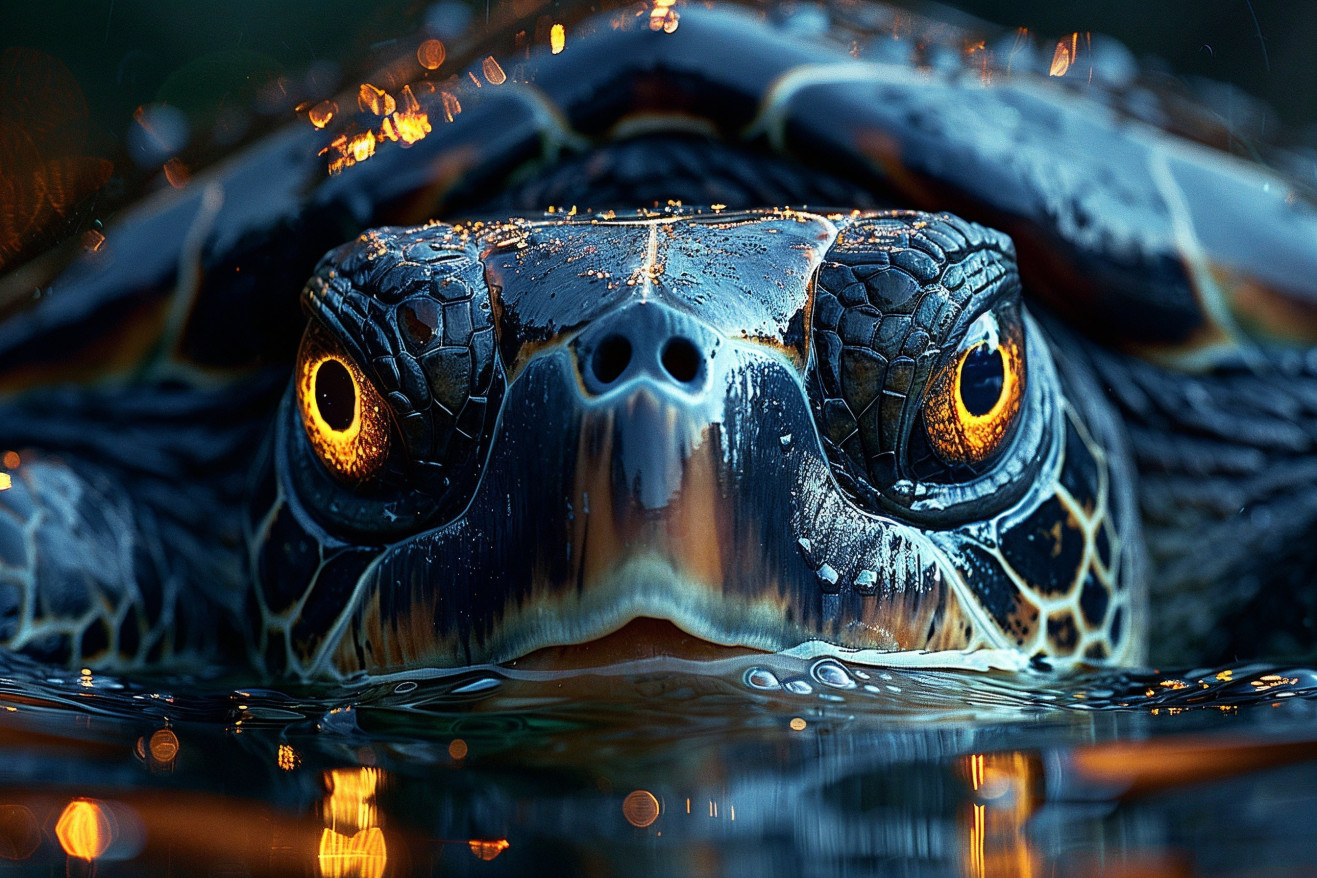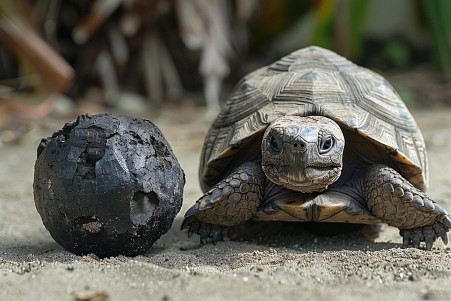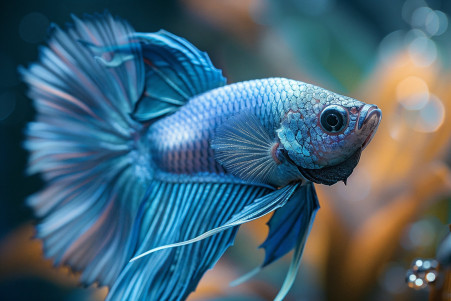Do Turtles Have Night Vision? Understanding Their Nocturnal Abilities
17 May 2024 • Updated 17 May 2024

Turtles have good vision in the daytime, but can they see well enough in the dark to get around? While turtles can't see in total darkness, they do have some night vision. This is due to a layer in their eyes called the tapetum lucidum, which helps them see shapes and movement when the sun goes down. However, color vision is limited at night.
This article will look at research on eye anatomy, behavior, and evolution to determine how well turtles can see at night. It will also explore how different turtle species have evolved to see in different light levels and times of day. By the end, you'll have a better understanding of the special adaptations that help turtles see better in the dark than they can in the light.
Do Turtles Have Night Vision?
Anatomical Adaptations for Low-Light Vision
Turtles have cone cells in their retinas, which means they can see different colors. However, according to the South Carolina Aquarium, they probably can't see the same range of colors that humans can. Most turtle species don't have a tapetum lucidum, which is a layer behind the retina that reflects light back through it, so their vision in low-light conditions is not as good as nocturnal animals.
That said, some turtles, including sea turtles, have evolved to have better vision in low-light conditions. Research published in PubMed found that leatherback sea turtles have larger pupils and more light-sensitive retinas than other sea turtle species. They also have a higher optical sensitivity than other marine turtles, although it's lower than the deep-sea teleost fish they share their habitat with.
A study in PMC found that sea turtles have a thick scleral cartilage that surrounds their eyes and keeps them from being deformed by the water pressure they experience during dives. This cartilage also counteracts the force of the extraocular muscles that would otherwise deform the eye. In addition, sea turtles have a number of protective features, including strong eyelids and nictitating membranes.
The anatomy of turtles' eyes varies widely between species, and the differences are often adaptations to their specific environments and behaviors. This can help explain why some turtles, like sea turtles, have better night vision than others. These adaptations are important for sea turtles' survival in the low-light conditions of the ocean, where they live and hunt.
Navigation and Migration: Visual Cues
Sea turtles rely on a combination of cues, including visual cues, to navigate and migrate across thousands of miles. The Olive Ridley Project explains that when sea turtle hatchlings are born, they use the direction of the waves and the celestial light from the moon and stars to help them find their way to the ocean. Juvenile and adult sea turtles are also able to sense the Earth's magnetic field and use it to help them navigate, in conjunction with visual cues.
Studies reported by Current Biology have even demonstrated that sea turtles can detect longitude by sensing the subtle changes in the Earth's magnetic field. This magnetic map sense, along with visual cues like the position of the sun and stars, is important for helping sea turtles stay on course and return to their nesting sites, as noted by The State of the World's Sea Turtles.
Learning more about the ways in which sea turtles use their vision to navigate can help researchers better understand their habits and can also help conservationists work to protect these incredible animals.
Impact of Light Pollution and Conservation Efforts
Light pollution near nesting beaches is one of the most serious threats to sea turtles, especially hatchlings. The National Fish and Wildlife Foundation explains that bright lights can cause hatchlings to become disoriented, leading them to move away from the ocean and increasing their chances of dying. "The exact number of hatchlings who are disoriented and die every year in Florida is unknown, but it's probably well over 100,000," said David Godfrey, executive director of the Florida-based Sea Turtle Conservancy.
Light pollution can also discourage adult female turtles from nesting on certain beaches. The Florida Fish and Wildlife Conservation Commission notes that even a single bright light near a nesting site can cause all of the hatchlings on a beach or the majority of them to go inland instead of toward the ocean.
Conservation efforts to combat light pollution in important nesting areas include the implementation of coastal lighting ordinances and community education. DarkSky International reports that successful initiatives have reduced hatchling disorientation and saved miles of nesting beaches from light pollution. The Sea Turtle Conservancy has a program that has partnered with more than 161 properties, which together represent more than 21 miles of beach, to address the issue of light pollution.
How to Help Sea Turtles With Turtle-Friendly Lighting
Install low-intensity amber or red lighting near nesting beaches, as these colors are less disruptive to turtles, according to DCCEEW. Make sure the beach itself is not directly illuminated and reduce outdoor lighting that spills onto the sand during nesting and hatching seasons. NOAA Fisheries recommends that any lights visible from the beach be shielded or redirected to prevent hatchling disorientation.
Coastal communities and property owners can help by adopting turtle-friendly lighting ordinances and practices, as the Sea Turtle Conservancy has done in Florida. People can also donate to conservation organizations that are working to combat light pollution and protect nesting habitats, as research has shown that these organizations’ work directly benefits sea turtle populations.
These steps to reduce artificial lighting can help ensure that sea turtles and other marine life can safely navigate and live in their natural habitats, enabling us to continue to learn more about the adaptations that make it possible for turtles to see and function in low-light environments.
Conclusion: Understanding Turtle Night Vision Adaptations
While turtles have evolved some adaptations to help them see in the dark, their night vision is limited. According to Turtle OMG, turtles don’t have true night vision like many other animals, but their eyes can adjust to low light to some extent. Turtles have a way to adjust their eyes to the light levels in their environment, and the longer they’re in the dark, the better they can see, eventually being able to see shapes and patterns even in complete darkness.
That said, turtles don’t have the same kind of night vision as animals like cats and owls. As noted on All Turtles, turtles don’t have a tapetum lucidum, a reflective layer in the eye that helps nocturnal animals see better in low light, so they’re not as well-adapted for night vision as some other animals.
That said, some turtle species, like the snapping turtle, may have slightly better night vision than others. In addition, according to The State of the World's Sea Turtles, sea turtles can see shorter, near-UV light wavelengths that are invisible to humans, which they use for navigation and nest site selection.
While turtles may not have great night vision, they do have good underwater vision. As the All Turtles article explains, turtles have evolved eyes that enable them to see clearly in both air and water, and they have a protective membrane that acts like a built-in mask.
By understanding the adaptations that enable turtles to see in the dark, we can work to protect these fascinating reptiles.


